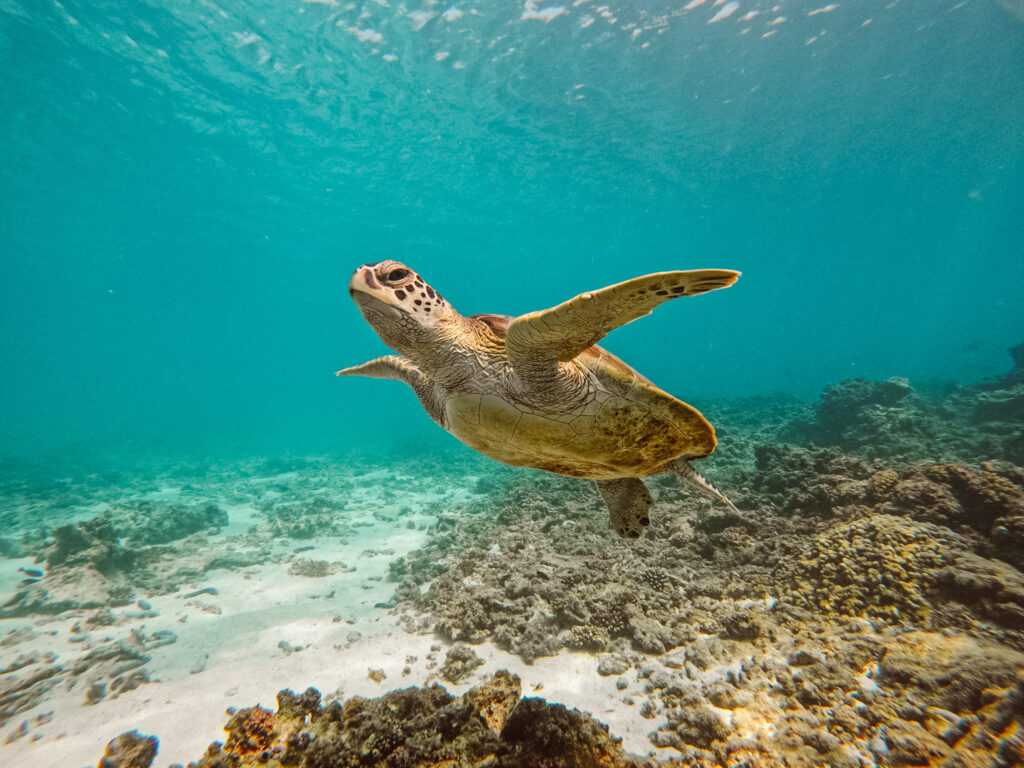
Pristine white sands and gentle turquoise blue waters are not usually the images that come to mind when you think of the landscapes of the Arabian Peninsula. But hidden amongst the sand dunes, ancient forts and bustling souqs, the tropical Daymaniyat Islands (also known as Damaniyat and Ad Dimaniyat) are one of Oman’s hidden gems.
WHERE ARE THE DAYMANIYAT ISLANDS?
Possibly one of the most beautiful places you have never heard of! This archipelago of nine, uninhabited rocky islands lies about 26 miles/42 km off the coast of Muscat.
You can snorkel and dive year-round at the Daymaniyat Islands. But depending on what you hope to see you might want to plan your trip for a specific time of year.
- November – April: if you want to camp on the islands, or explore their white sand beaches, you need to visit in the winter months. Between May and October landing on the islands is prohibited, to protect the turtles’ nesting sites, and migratory birds. The rest of the year, a permit is required to camp overnight.
- August – October: to meet Oman’s largest temporary residents – the whale sharks – you will need to be here in the summer months. Entirely anecdotally, we usually hear of most sightings from friends and colleagues during September. So if you can bear the hotter temperatures this might be your best bet whilst avoiding the truly scorching height of the summer.
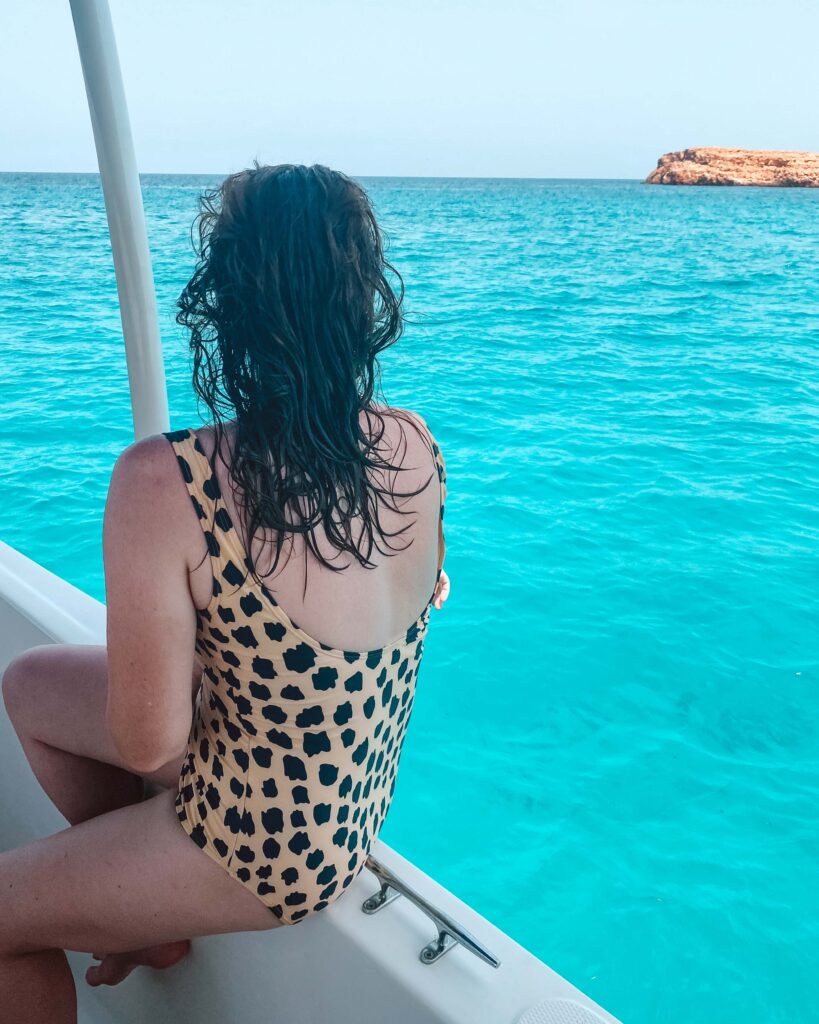
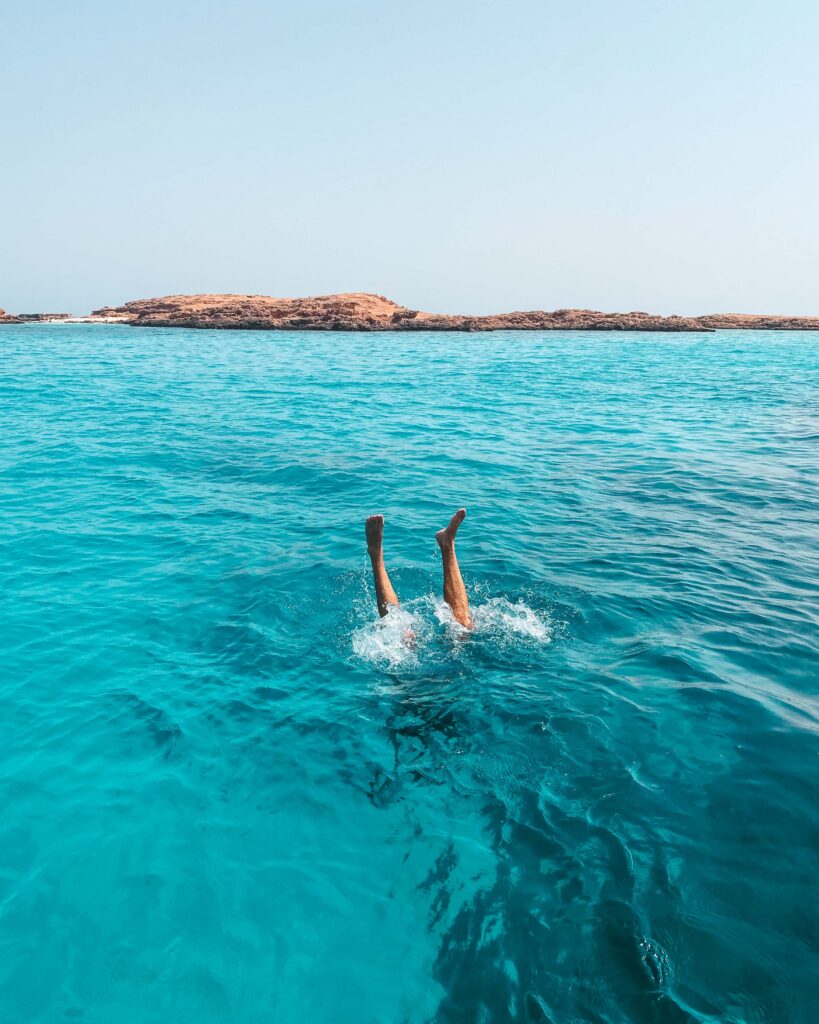
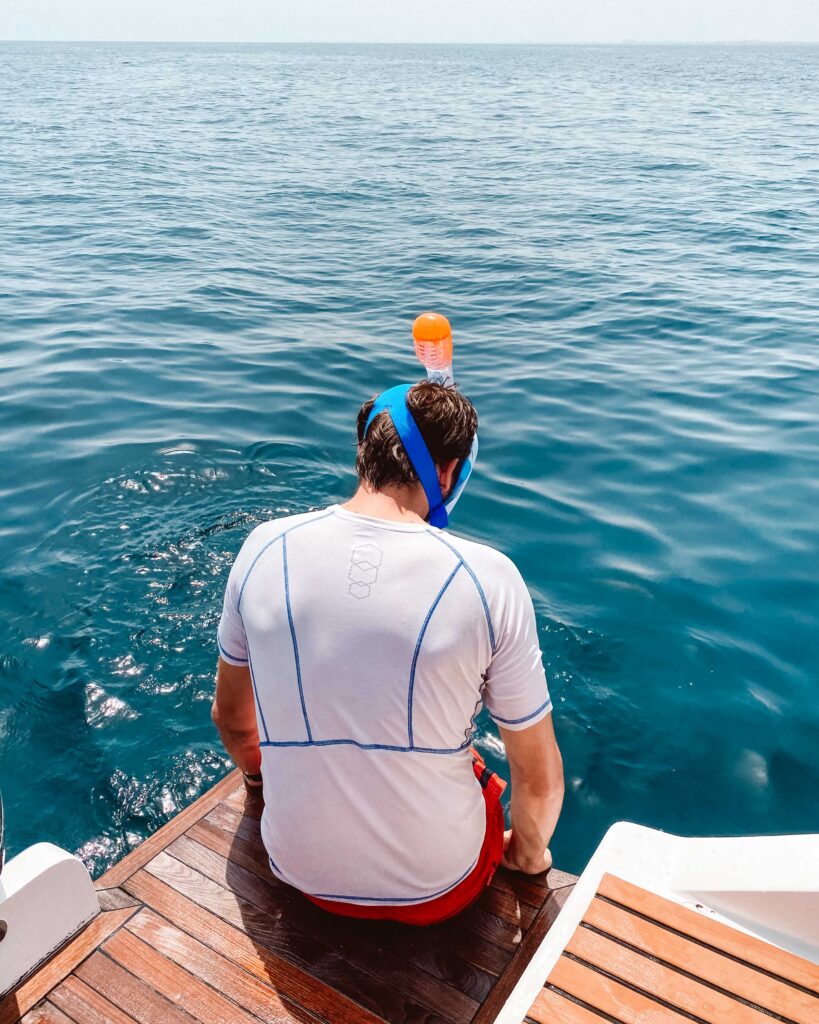
THE WILDLIFE
The islands have been protected as a marine reserve since 1996. The waters are rich in marine life, and in the more protected bays, sea grass and coral.
The islands are the world’s densest nesting ground for hawksbill sea turtles, meaning you are all but guaranteed to see turtles on your visit. On our last trip we counted 18 just at one snorkel site!
Expect to see lots of angel, clown and parrot fish year round, rays, and often a few striped sea snakes. Be aware sea snakes are highly toxic so be careful to keep your distance. Although more often than not they will dive before you get anywhere near them.
The most celebrated residents of these waters are actually found out in the open seas, a few miles from the islands. Every year, whale sharks congregate in large numbers off the coast of Oman between August and October, to feed in the plankton rich waters. These gentle giants are the largest known fish species – the largest recorded was a mighty 18.8m long! They live for about 80 years, in warm tropical waters. Sadly whale sharks are on the endangered list, so it is an incredibly privileged experience to have the chance to spend a bit of time in their world.
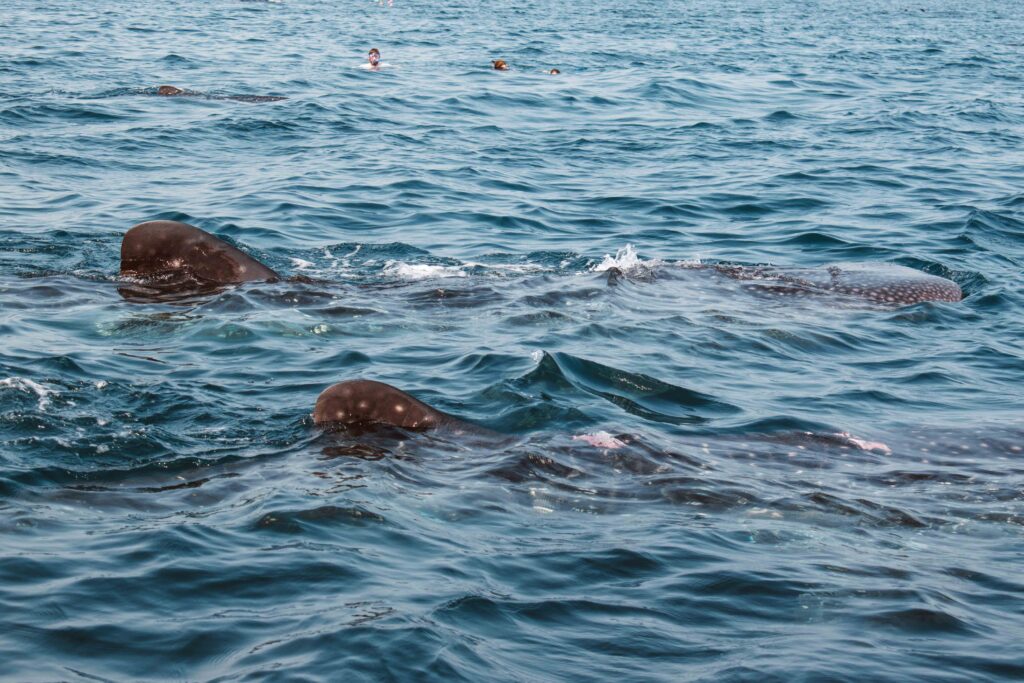
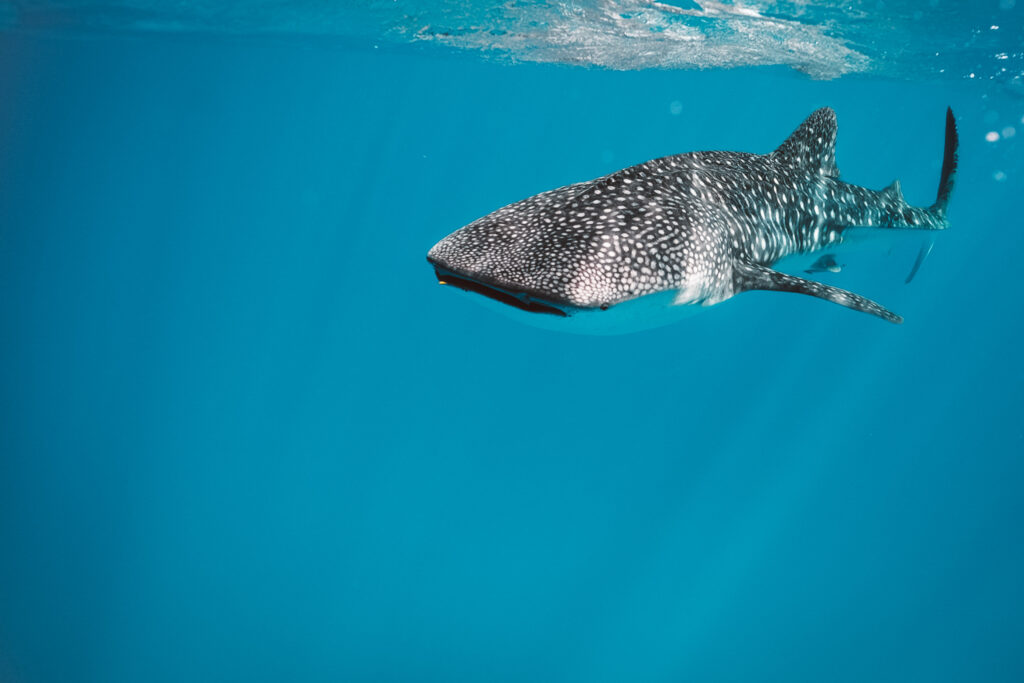
GETTING THERE
Given the watery nature of this adventure, you will need to arrange boat transport to get you to the Daymaniyat Islands. It takes around 45 minutes, with most trips departing from Al Mouj Marina in Muscat. Although the seas are rarely rough, the speed that the boats whizz you out to the islands makes for a fairly bumpy ride.
You can hire a boat company to take you out to the islands, but I strongly recommend booking an organised trip with Daymaniat Shells above any of the other options on offer. They run a range of snorkelling, whale and dolphin watching excursions, and can arrange overnight camping on the Daymaniyat Islands during the permitted season. Their commitment to protecting Oman’s natural environments is wide ranging and genuine. Captain Fahad’s enthusiasm is totally infectious, and his ability to spot a fin in miles of open water is nothing short of mystical!
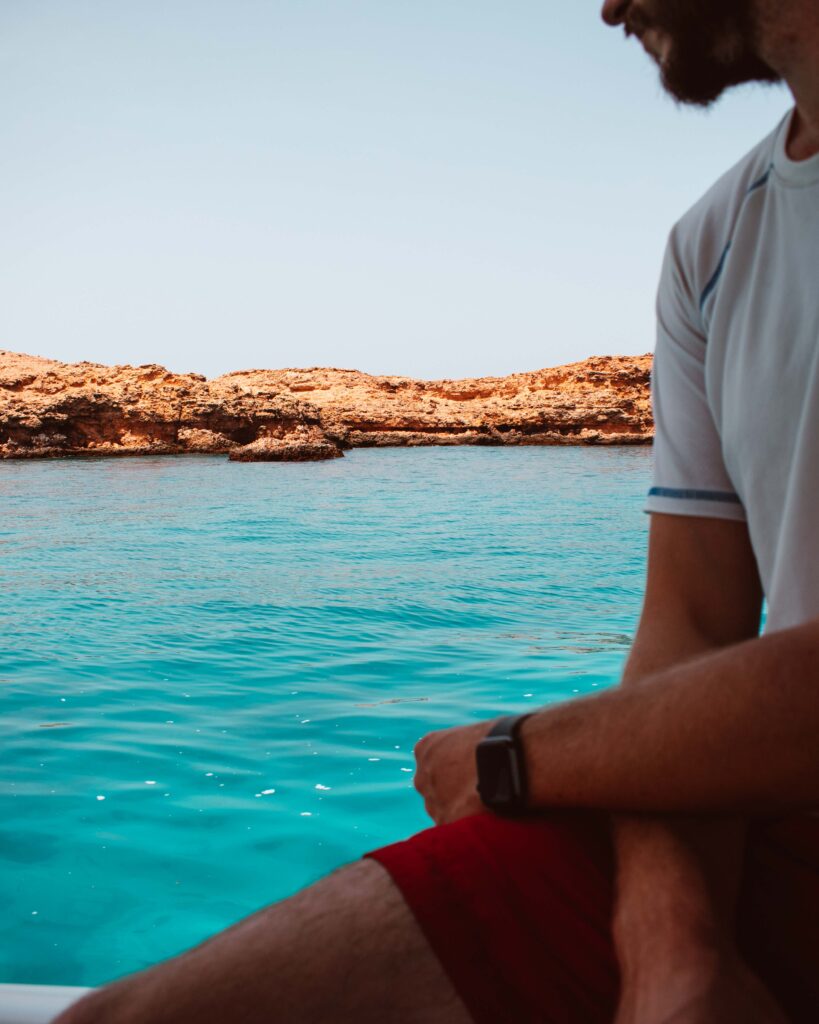
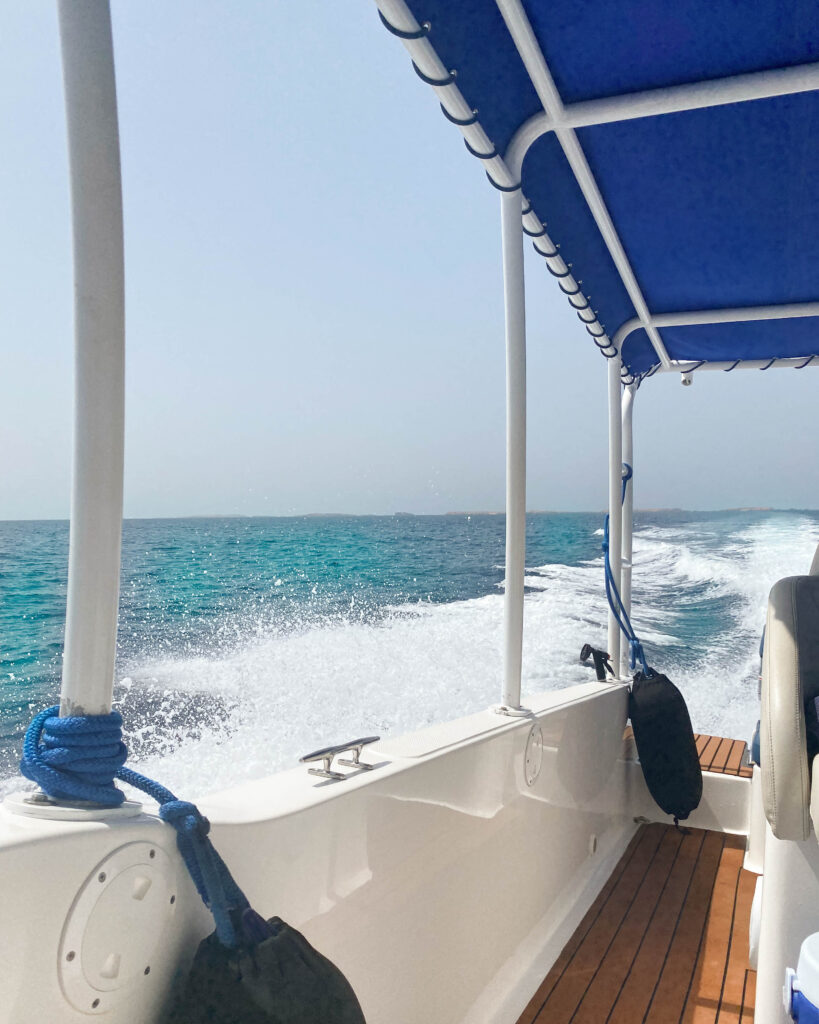
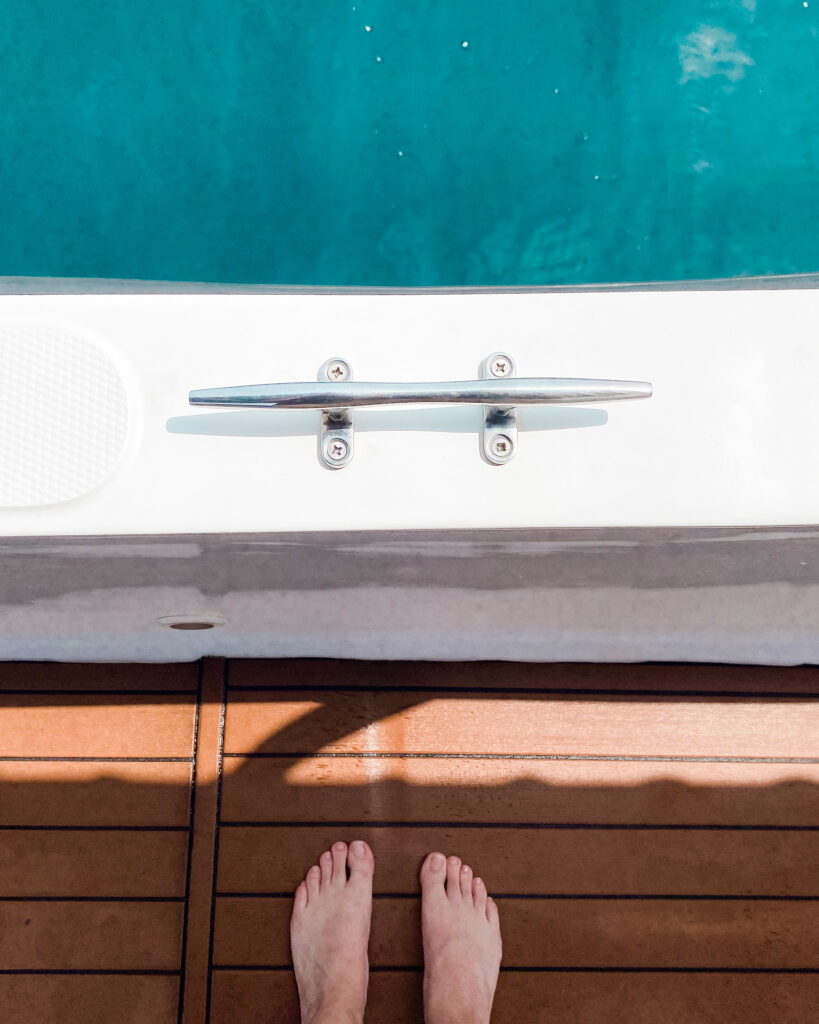
Snorkelling trips run most days, with pick up at Al Mouj marina at 8am. 30 OMR (£65) per adult. The price includes the permit required to enter the Daymaniyat Islands marine reserve, as well as lunch and snorkelling equipment. Trips are listed as half day, returning to Muscat at around 2pm but I recommend setting aside a whole day when planning your itinerary. You will spend many hours in the water and out in the sun – you will be exhausted! Also, if here in the right season and you spot whale sharks, you will likely be out much longer than listed as Captain Fahad will give you as much time as possible with these majestic sea creatures.
Although Daymaniat Shells can provide buoyancy aids and life vests, I recommend this is an excursion best for confident swimmers. The snorkelling sites around the islands themselves are quite protected, but still subject to ocean currents. The water is too deep to stand in most places, and you will be in the water for several hours (although you can get back on the boat at any time). If you visit during whale shark season, you need to be confident swimming and treading water for several hours, in open water with swell.
WHAT TO BRING
All snorkelling kit, drinking water and a lunch is included in Daymaniat Shells trips. You will be given a reusable water bottle to use for the day, and to take home with you as a souvenir of your trip.
Towel, swimming costume and t-shirt to swim in: on all of our trips to the Daymaniyat Islands, the group has been a mixed bunch of both Omani families and visitors. Swimming in a t-shirt is therefore to ensure you are dressed appropriately, but you will also want it for sun protection. Expect to spend several hours snorkelling, and do not underestimate the intensity of the sun and added UV reflection off the surface of the water. If your skin is not covered it will quickly burn to a crisp!
Hat, sunglasses and sunscreen: as above, you will be out in the direct sun for many hours – either in the water or on the boat. Choose something friendly to the marine habitat. Just be sure to buy it before your trip as I have never seen coral-safe sunscreen for sale in Oman.
Water shoes: if you plan to land on the islands, you might want to bring water shoes to clamber over the rocky outcrops and give some protection from the hot sand.
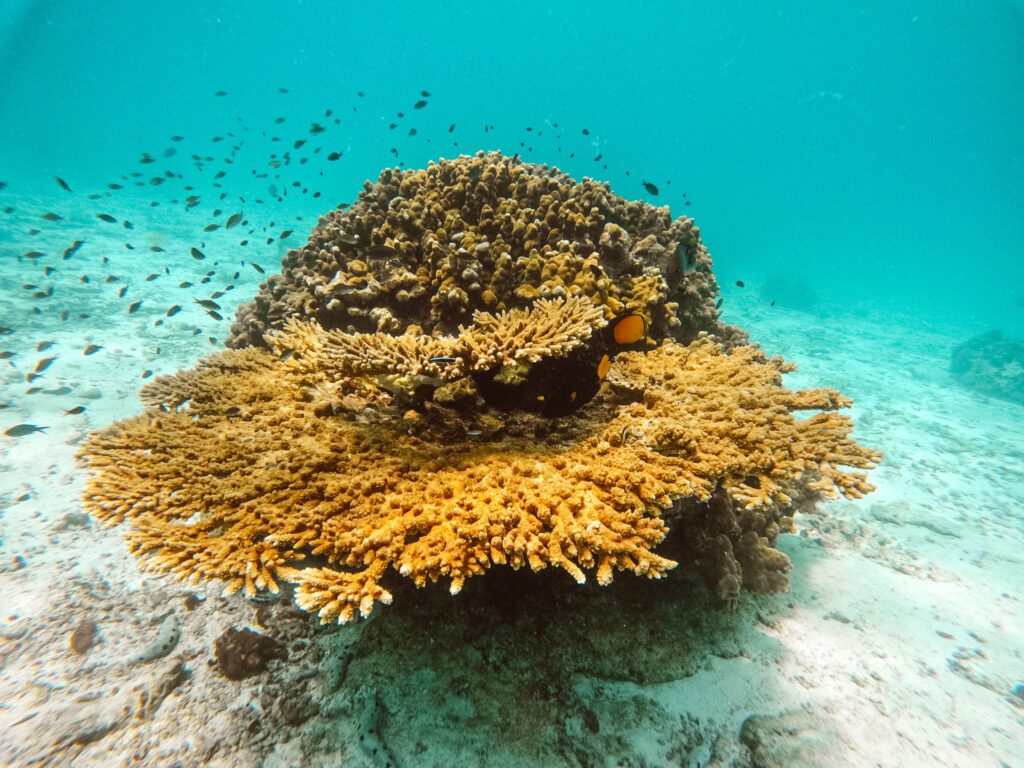
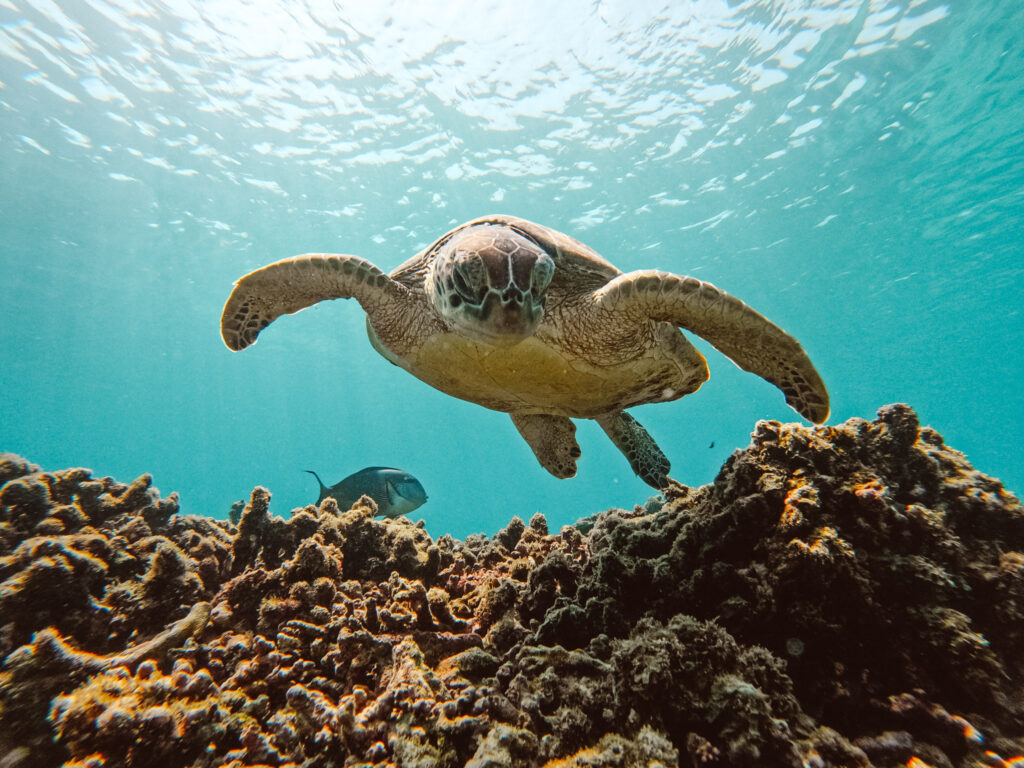
CAMPING
Staying on the islands is only possible outside of the turtle nesting season, between November and April. A Ministry of Environment permit is required to camp during these months. These permits can be bought from a number of the dive centres that operate out of Al Mouj marina.
However, I instead recommend booking your trip through Daymaniat Shells to avoid the hassle of trying to sort your own permit as well as transport. Either on one of their organised camping trips (95 OMR/£205), or if you get in touch, they can sometimes arrange to take you out to the islands and pick you up again the next day to camp on your own.
There are no facilities on the islands. All food, water and shelter must be brought with you and you must strictly follow all guidelines to leave behind no waste. The islands are patrolled by the Royal Omani Police coastal guards.
Have a look at all of my other guides to exploring Oman, or my adventure series for other ideas for your next trip away.




Leave a Reply